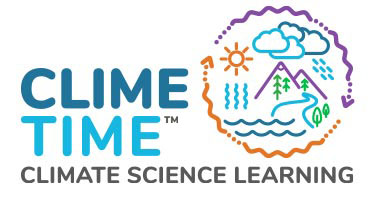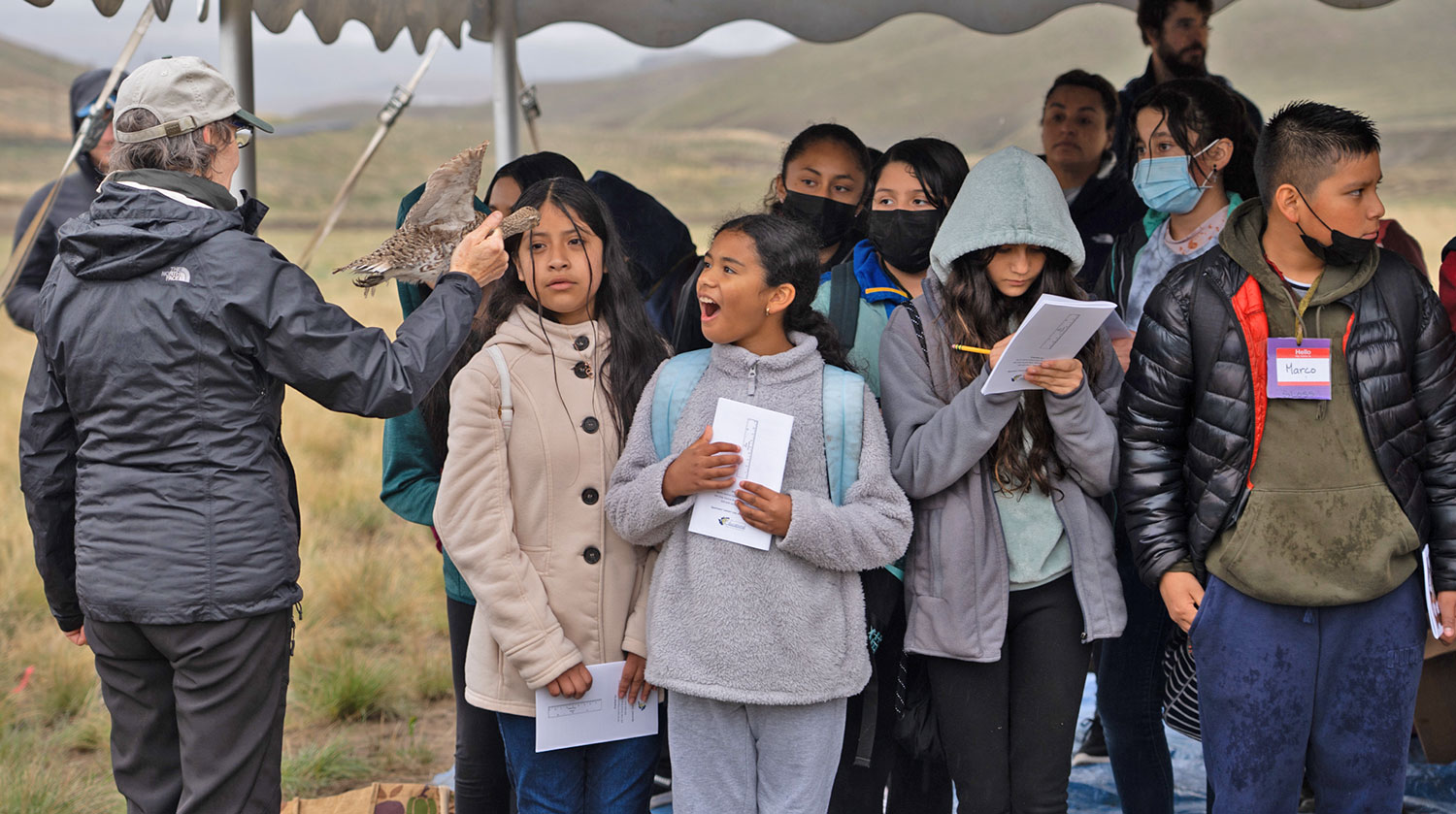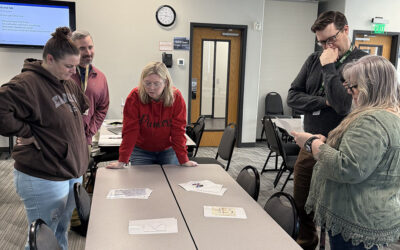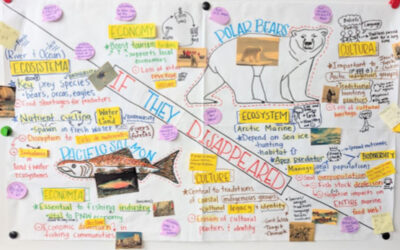The STEAM in the Field events were built on a pilot project last year at Scotch Creek Wildlife Area located near Conconully, WA. This year’s expansion of STEAM in the Field included a new site at Foster Creek Wildlife Area near Bridgeport, WA.
The purpose of these field events was to engage students in a real-life project that ties in science, math, and literacy objectives. Additionally, students were exposed to STEM careers in their backyard. Finally, these STEAM in the Field events included pre and post materials, in order to solicit background knowledge and provide additional information to create a storyline that did not start and end with one day out in the field.
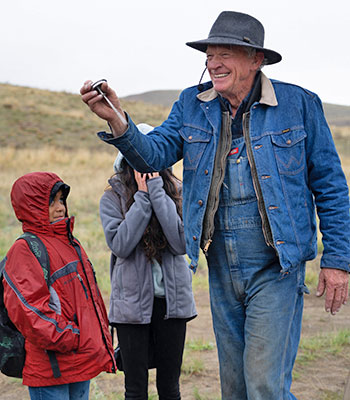
Wade Troutman shows students the tool he uses to measure the temperature of the soil which helps him determine when he can plant his crops.
Led by the North Central Educational Service District, with funding from ClimeTime Proviso, students worked alongside scientists to determine the success rate of water birch trees after a forest fire, analyze the volume of water behind and in front of a beaver dam analog, engineer water retention devices, examine the erosive force of water in a simulated stream bank, inventory insects, plant and identify important plant species and reflect on the interactions of the geosphere, biosphere, hydrosphere, and atmosphere with a watercolor. All of the stations provided evidence to support the driving question of the field event: How do enhancements to a landscape help the sharp-tailed grouse? These STEAM in the Field events highlighted the Washington State Department of Fish and Wildlife’s efforts to conserve the state-endangered sharp-tailed grouse in Okanogan and Douglas County.
The planting station continued to be a fan favorite. Students were awed at the reality that they could plant for a job. Some students didn’t want the planting to end; they asked when they could volunteer again to plant more plants. Thanks to the generous donation of native seeds from the Washington Department of Fish and Wildlife, every student received a small packet of locally-sourced grass seeds to plant in their own backyards or school yard.
A teacher from Oroville shared these reflections:
“The field trip was amazing! The stations tied directly into the lessons we have been teaching in class and the NGSS standards. I enjoyed listening to the kids answer the questions at the stations (Hey, they really do listen in class!). The students were engaged and had a great time learning about the science concepts we’ve been learning about in action. An added bonus, it got a lot of them thinking about different jobs they can do in the future! The comment I heard on the way home on the bus was, “I want to do that when I grow up!” A great example of engagement and learning would be with a student I have that has ADHD. In class it is a challenge for him to focus and pay attention to what is happening in class, however, on this trip he was on task, listening, answering questions, and learning! Being able to move on and apply what we have been learning hands-on in a real-world situation was fabulous for these students. It will definitely be something they will remember for their lifetimes! The presenters were great and patient with the kids, the stations were aligned nicely, and the kids had a great time learning! “

Students choosing their native plants to plant for restoring the landscape after the 2020 fires.
As noted from the array of stations listed, station leaders were essential to the success of the day. Connecting and communicating with station leaders was a huge part of these events. All station leaders worked hard to develop hands-on, engaging activities that aligned with NGSS three-dimensional standards, and connected to our driving question: How do enhancements to the landscape support sharp-tailed grouse?
The events started with a short presentation on sharp-tailed grouse and BDAs, explaining that the Foster Creek and Scotch Creek areas are one of the best (and only) places to find sharp-tailed grouse in Washington state. Additionally, a brief history was shared by a local farmer, conservationist, former Bridgeport 5th grader, and current grandfather, Wade Troutman at Foster Creek, and an Associate Professor from Boise State University, Stephanie Galla, who shared her research on analyzing sharp-tailed grouse poop at Scotch Creek.
This unique learning experience was made possible in partnership between North Central Educational Service District and the Washington Department of Fish and Wildlife with funding from ClimeTime Proviso and Washington State LASER. Additional partners include Team Naturaleza, Methow Beaver Project, Waterville School District, Bridgeport School District, Tonasket School District, Oroville School District, The Confederated Tribes of the Colville Reservation, and Okanogan and Foster Creek Conservation District.
Story by Lisa Monahan, NCESD STEM Coordinator
